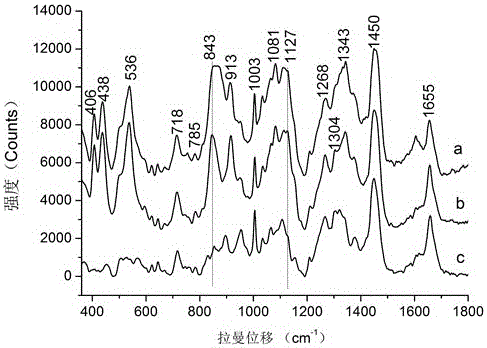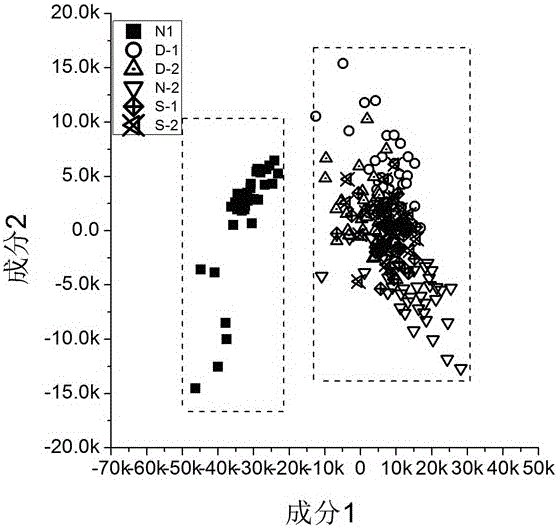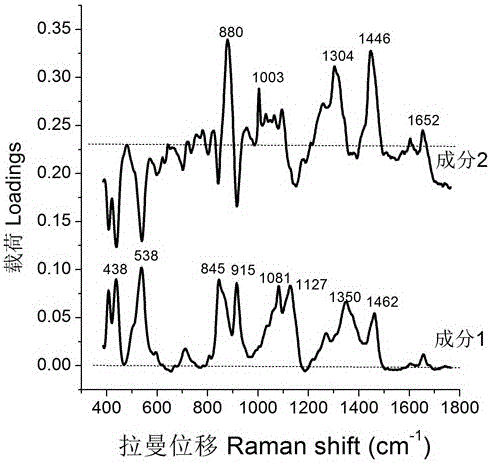Method for quickly detecting microsporidia spores
A technology for sporozoite spores and spores, which is applied in the field of direct detection of pathogenic microsporidia spores based on single-cell Raman spectroscopy, can solve the problems of detection hysteresis, toxicity, and low detection sensitivity, and achieve a good signal-to-noise ratio and easy operation Effect
- Summary
- Abstract
- Description
- Claims
- Application Information
AI Technical Summary
Problems solved by technology
Method used
Image
Examples
Embodiment Construction
[0030] The present invention will be described in further detail below in conjunction with the accompanying drawings and embodiments. This embodiment is only to illustrate the present invention more clearly, rather than limit the present invention.
[0031] 1. Raman spectrum analysis of different silkworm microsporidia spores
[0032] 1. Experimental materials
[0033] Strains: isolated from silkworms infected with Nosema bombycis (N.b for short).
[0034] 2. Experimental method
[0035] 2.2 N.b infection process / method
[0036] Dilute the microsporidium spore liquid for testing to a concentration of 1×10 7 mL-1 Take the suspension of microspores and smear it on the surface of mulberry leaves, and feed the silkworms at the 3rd age. After the silkworms eat up the poisonous mulberry leaves, they will change to normal non-toxic mulberry leaves.
[0037] 2.3 N.b spore isolation
[0038] The dead silkworm body was taken, and the dissected silkworm midgut was ground with a mor...
PUM
 Login to View More
Login to View More Abstract
Description
Claims
Application Information
 Login to View More
Login to View More - R&D
- Intellectual Property
- Life Sciences
- Materials
- Tech Scout
- Unparalleled Data Quality
- Higher Quality Content
- 60% Fewer Hallucinations
Browse by: Latest US Patents, China's latest patents, Technical Efficacy Thesaurus, Application Domain, Technology Topic, Popular Technical Reports.
© 2025 PatSnap. All rights reserved.Legal|Privacy policy|Modern Slavery Act Transparency Statement|Sitemap|About US| Contact US: help@patsnap.com



